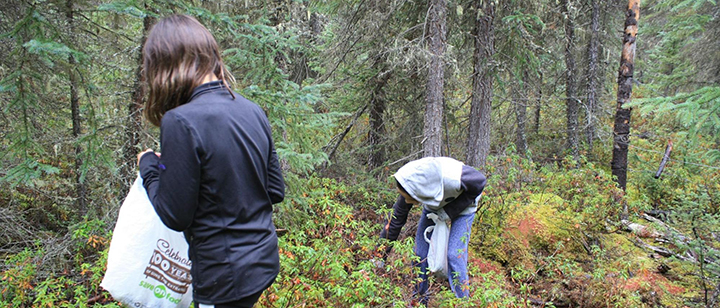“Soo ‘int’en” “Soo ‘et”
In Dakelh, Soo ‘int’en means good work and Soo ‘et means right on or excellent!
These are just two of the phrases that Cultural Teacher, Sara Sam uses in her language to encourage her students. Sara’s philosophy is to always say positive things to her students.
Sara Sam is from Nak’azdli Whut’en. Nak’azdli is located in the Nechako region of northern British Columbia and is adjacent to the city of Fort St. James, 145 km northwest of Prince George.
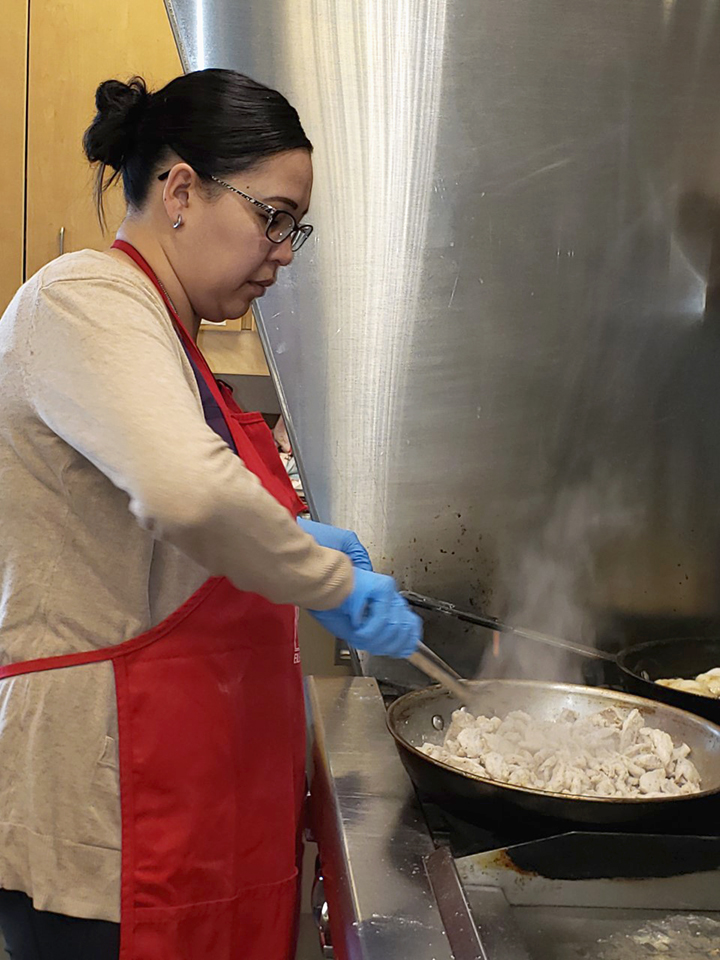
Sara Sam is a mother, Dakelh speaker, grandmother, aunty, cultural teacher and an incredible leader in her community. Sara started working with her community about ten years ago when she began her educational journey into becoming a certified teacher. She now works at the Nak’al Bun Elementary School as the Cultural Teacher and Vice Principal where she teaches students from pre school to grade 7.
The Nak’al Bun Elementary School is a band operated school with enrollment from both Indigenous and non-Indigenous students from Fort St. James and surrounding First Nations communities. The school is surrounded by the beautiful Nak’al Bun (Stuart Lake), Nak’al dzulh (Mount Pope) and chuntoh (forest). The school was completed in 2013 on reserve land on the site of a previous residential school which the community had to buy the land back from the catholic church and built a state of the art school for their students. The building is highly efficient, with geo exchange heating source and natural ventilation, and includes a cultural room and industrial kitchen. The school hosts a hot lunch and healthy snack program daily for all students and incorporates traditional foods whenever possible.
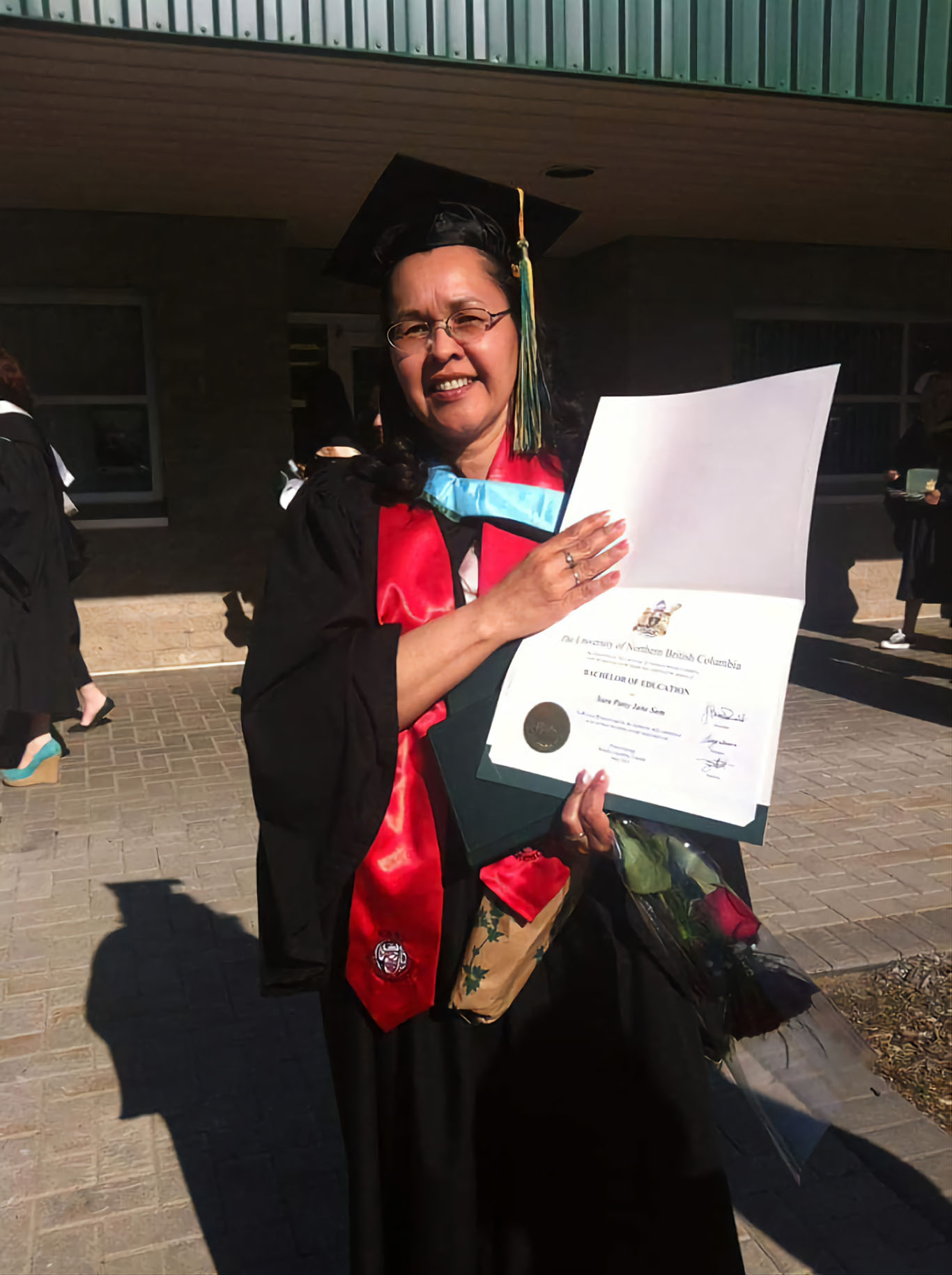
Sara does lots of cultural programming throughout the seasons with staff and students. In the fall time, the students have the experience of learning net fishing for salmon. They see how the salmon is processed, cut and prepared for drying or freezing. Fall time is also time for picking ludi musjek (labrador tea). The tea is harvested by hand by the students and is dried in the classroom(s) for students and staff to take home, while some is stored at the school for cultural or feast days. Students also learn about the traditional medicines that grow around the school and participate in medicine making.
In the winter students will learn how to snow shoe, snare rabbits, and how to ice fish. The Nak’albun school will invite fishers to come and work with the students to demonstrate how to harvest the various fish species found in Nak’al Bun and how to pull and re set the fishing nets. In January, the school also hosts a cultural week, and brings in many elders , special guests, and knowledge holders to work with the students. The guests will share their knowledge and teachings on traditional medicines, crafts, storytelling, trapping, ice fishing, drumming and singing. Elders will come in and share stories with the students, often walking out to the treeline to have a campfire, visiting ‘ulbayoh (pit houses) and traditional lean-tos and learning the significance of these cultural structures. The school prides itself on being able to share traditional knowledge and on the land experiences and are very proud of their students who are able to participate everyday using the Dakelh language and culture.
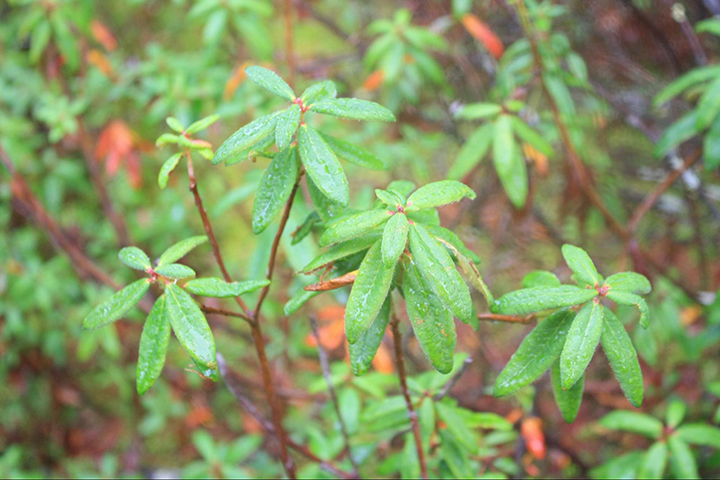
In the last couple of years, the school’s cultural week has had to be moved ahead by a month due to lack of snow, and dangerous ice conditions. Climate change is changing the accessibility of food resources for Nak’azdli and Sara understands the importance of taking care of mother earth and passing on these teachings to the younger generations.
“Respect all, respect everything we do each and everyday” – Sara Sam
Sara highlighted the issues of lack of funding and staff capacity for on reserve schools but despite this, Sara is creating many amazing cultural, educational, and land-based learning opportunities for her students with limited resources. Sara was asked to give some tips to other schools or communities to support food systems in their schools and the insight she shared was to “get more young people involved and trained to work in the schools as educational assistants or other roles”. She mentioned that “we need to inspire our youth, to work in the schools, with the students, and to support them! We need more young people in here.”
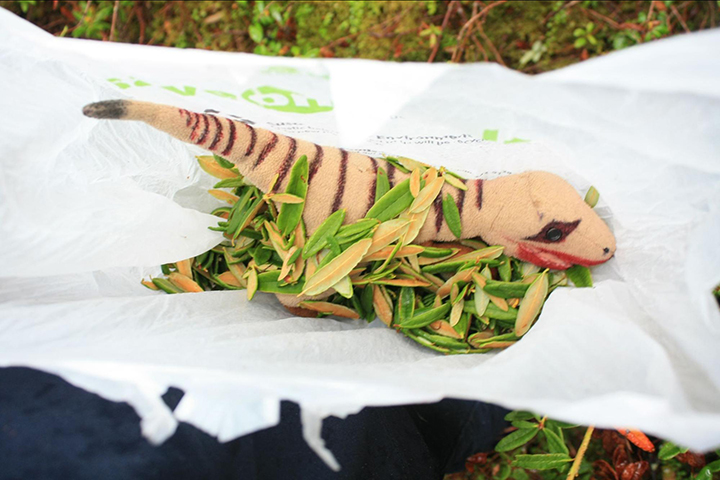
Sara’s dream is to have a bigger team and more experienced people working in the school, so that they can help their students, help them be inspired, be proud to be First Nations and to support them with cultural and outdoor activities, learning about plants and medicines and setting nets for salmon.
Young people are the future and everything that is done is for the benefit of current and future generations. The time is now for sustained, long term funding for both on reserve and off reserve schools so Sara and others like her can be supported to continue doing amazing work within their communities. Musi (thank you in Dakelh), Sara, for your amazing leadership within your community.
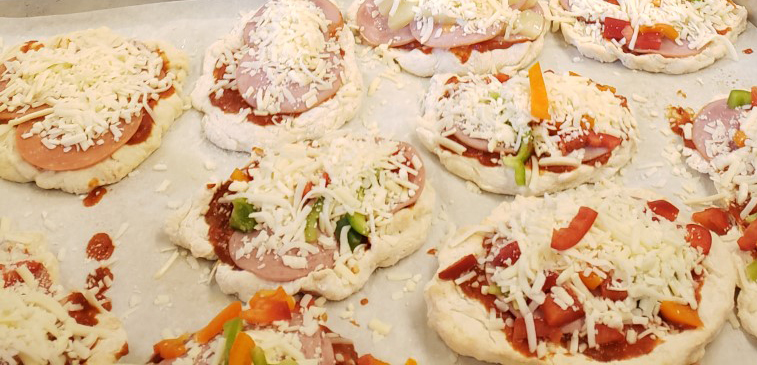
Oven – Bannock Recipe:
3 cups of flour
2 1/2 tablespoons of sugar
1 tablespoon baking powder
1/2 teaspoon of salt
1/4 cup of oil
2 cups of luke warm water
- Mix together flour, sugar, baking powder, salt in a large bowl. Make a well in the center of the dry ingredients.
- Pour the water in the center of the well and add the oil. Gradually mix the water and dry ingredients together.
- Once fully mixed together, oil your hands (you may wear cooking/rubber gloves (disposable ones)) and oil your gloves on the outside so the dough doesn’t stick.
- Form small balls of dough and place on a greased cookie sheet/baking pan, you may flip the dough so both sides are oiled.
- This should make one cookie sheet of banuk. Bake at 350 degrees F for 25 to 30 minutes until golden brown. If the banuk does not brown turn on broil for a couple of minutes until golden brown.
Fried Bannock
- To make fry banuk you may use the same recipe but make leave out the oil and add 1 cup more water to make a sticky dough,
- the dough will then be drop by large spoonful into hot oil in a deep fry pan. You brown one side then flip to the other side cooking it on medium heat.
- You can use the top recipe with out oil and make the banuk flat a bit and cook in hot oil as well for fry banuk too.
Musi,
Sara


